Anastasia Balezdrova
The Parthenon frieze is the continuous strip that decorated the building on the outside, just below the ceiling. Unlike the mythological themes of the metopes and pediments, Phidias had preferred to present on it a composition dedicated to the most important festival in ancient Athens, namely the Great Panathenaea. It took place every four years and lasted 12 days that were filled with ceremonies, sacrifices, sports and music competitions. The climax of the celebration was the final day, the 28th day of the month of hekatombaion, which was the first month in the calendar of the ancient Athenians and it corresponds to present July.
On this day ancient Athenians formed a procession which set off to the temple of Athena Poliada (the ancient temple, which was later replaced by the Erechtheion) to give the priests the new veil for the statue of the goddess.
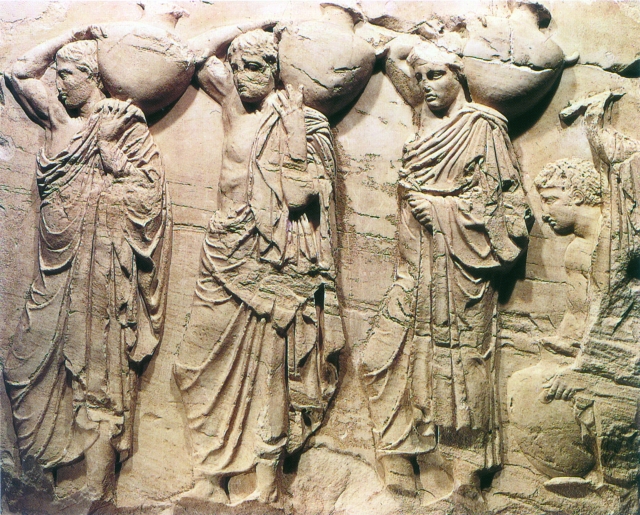
The frieze was 160 metres long and consisted of 115 pieces of medium height 1.02 metres. It depicted about 378 people and gods, and more than 200 animals, most of which were horses. The larger part of the frieze depicted groups of riders, followed by a procession of animals and groups of men and women, holding sacred vessels and offerings in their hands.
Although 112 of a total of 115 pieces have survived up unto the present day archaeologists are looking for a way to analyze in detail the figures on the marble frieze. This has become possible with the help of modern technology. The first results of the three-dimensional digital scan of the entire frieze, showing the ancient sculptures in a completely new way, were presented at a special press conference at the Acropolis Museum.
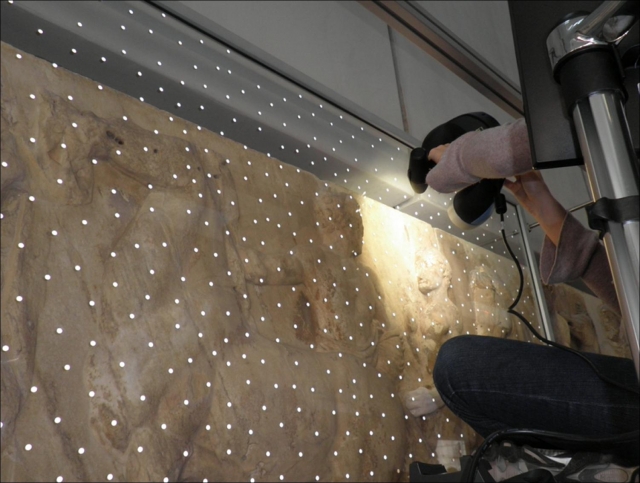
For three years professionals from the Polytechnic School of Aristotle University of Thessaloniki and Geoanalisi company scanned, and captured with high-resolution cameras, all the parts of the frieze, which are both in the Acropolis Museum in Athens and in the British Museum in London. Then they created three-dimensional models of each of them, making visible even the smallest details of each sculpture.
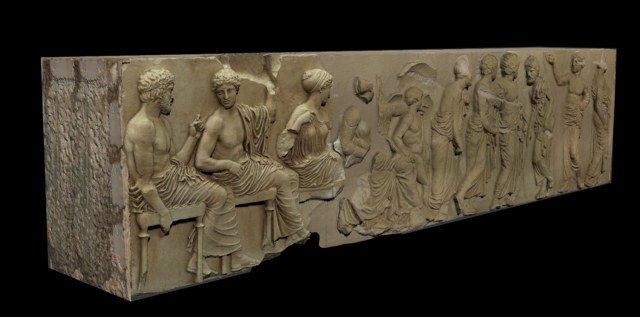
A three-dimensional restoration of piece VI from the eastern Parthenon frieze achieved by laser scanning of the originals in the Acropolis Museum and in the British Museum, and of castings made in the 18th century, which do not exist today.
So it is already clear that Dionysus has a golden wreath on his head and probably holds a sceptre, Poseidon holds a trident and dolphin and the goddess of hunting, Artemis, a bow.
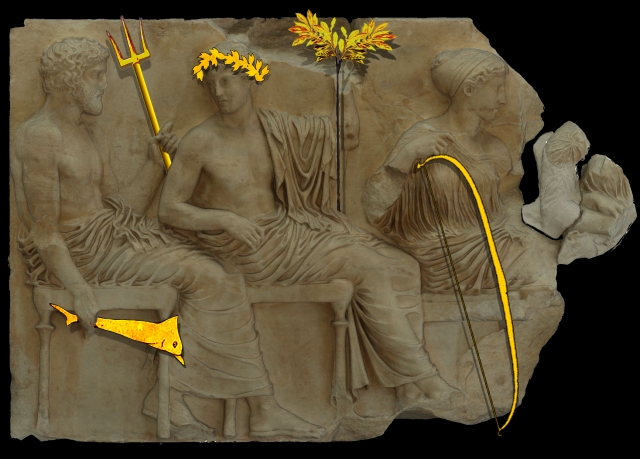
Poseidon, Apollo and Artemis from the eastern Parthenon frieze with gilded bronze symbols
The experts explain that they scanned and photographed the sculptures at a distance of half a metre and, in some cases, used hybrid digitization methods.
Variable light and the fact that the sculptures in the Acropolis Museum are placed at a height of 1.5 metres from the floor were just some of the challenges to the experts who were looking for the optimal way to fulfil their mission without harming the valuable exhibits. In Athens, they scanned them using a special device that allowed the operator to approach them as closely as possible and provided him with complete freedom of movement. It was not possible to scan the parts of the Parthenon frieze in the British Museum and therefore, three photographerss took over 20,000 photos within five days.
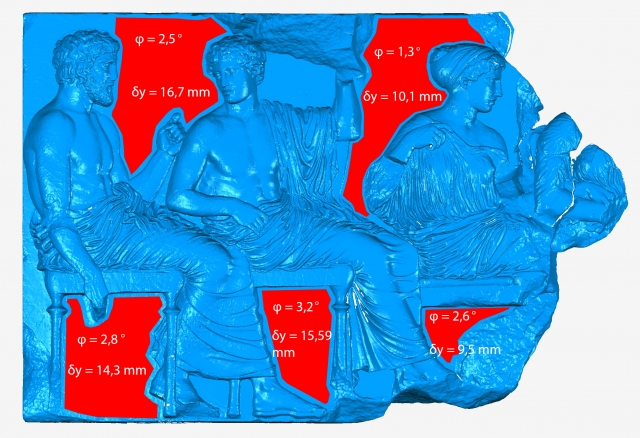
The western part of the frieze, which is in the Acropolis Museum, is the best preserved. In general, 50 metres from the frieze are kept in Athens and 80 metres in the British Museum, there is one piece in the Louvre, and other smaller pieces are scattered in museums in Palermo, the Vatican, Würzburg, Vienna, Munich and Copenhagen.